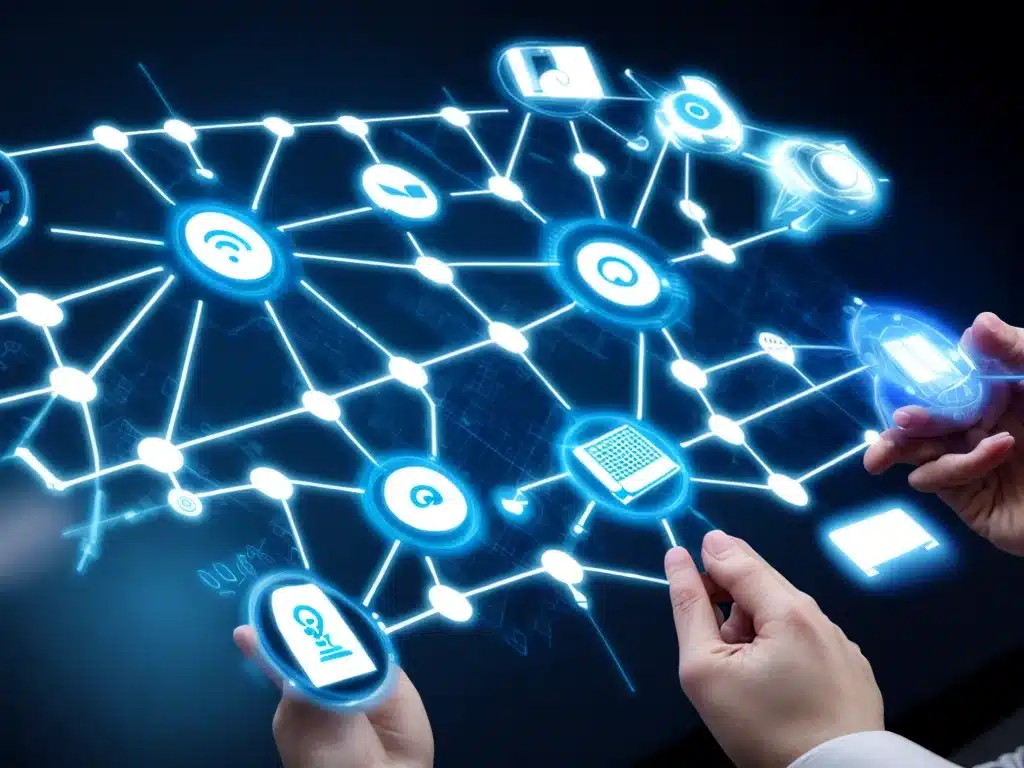
Introduction
The Internet of Things (IoT) is transforming businesses across all industries by connecting physical devices and assets to the internet. This enables enterprises to monitor, collect data, and control these devices remotely. Implementing an IoT solution provides numerous benefits such as improved operational efficiency, better asset utilization, and new revenue opportunities.
In this article, I will provide an in-depth look at real-world examples of enterprise IoT deployments. I will cover various industries and use cases to demonstrate how IoT is being leveraged by organizations today. For each example, I will explain the key components of the IoT solution and analyze the business impact.
Manufacturing
The manufacturing industry is using IoT on the factory floor to optimize production processes. By outfitting machinery with sensors and connecting it to the internet, manufacturers gain unprecedented visibility into equipment performance and production metrics.
Predictive Maintenance
One of the most common IoT use cases in manufacturing is predictive maintenance. This involves using data from industrial machines to identify issues and failure patterns. By understanding when specific parts are likely to fail, manufacturers can schedule proactive maintenance before a breakdown occurs.
For example, Balluff, a sensor manufacturer, implemented a predictive maintenance program at its production facility. Vibration, temperature, and magnetic field sensors were installed on critical machinery. The real-time data is analyzed using AI algorithms to detect abnormalities and send alerts. This IoT solution reduced unplanned downtime by 25% across the plant.
Automated Inventory Management
IoT enables manufacturers to automate inventory tracking processes for increased efficiency. Sensors can monitor product levels, location, and conditions in warehouses and storage areas. This provides real-time inventory visibility and helps optimize stock counts.
Stanley Black & Decker attached small wireless tags to each product unit at their tools plant. The tags connect to IoT gateways throughout the facility, allowing the exact location and quantity of items to be monitored at all times. This IoT system cut the time spent taking inventory by 50%.
Transportation
The transportation sector leverages IoT to track vehicles, cargo, and shipments. Connecting assets to the internet provides real-time tracking visibility and data for optimizing routes and logistics.
Fleet Tracking
Commercial trucking companies outfit their fleets with IoT sensors to monitor location, driver performance, fuel usage, and engine diagnostics. This enables dispatchers to effectively coordinate routes and respond rapidly to issues that arise on the road.
Geotab is an IoT platform used by over 40,000 fleets globally for vehicle tracking. The system consolidates telematics data from installed fleet sensors to provide web-based analytics and reporting. Geotab helps companies improve safety and compliance while optimizing fuel consumption and maintenance.
Smart Package Delivery
Major delivery providers like UPS are leveraging IoT to transform package tracking and supply chain analytics. RFID tags or barcode labels are attached to parcels to enable real-time monitoring throughout the delivery process. This allows enterprises to identify bottlenecks and continuously optimize the efficiency of delivery operations.
UPS equips its fleet of over 100,000 vehicles with sensors that capture location, speed, and fuel usage. This IoT data is used to reduce idle time, eliminate unnecessary miles, and train drivers on improving fuel efficiency. As a result, UPS saved over 10 million gallons of fuel in 2016 alone.
Energy Management
The energy industry is widely adopting IoT solutions to better manage power distribution grids and improve sustainability. Intelligently monitoring energy usage across buildings and equipment allows organizations to reduce waste and optimize consumption.
Smart Grid Optimization
Electric utilities implement IoT systems to monitor energy flow from power plants to commercial and residential buildings. Sensors across the transmission network provide data to optimize power distribution in real-time based on demand. This results in a more reliable and efficient smart grid.
Pacific Gas and Electric Company (PG&E) utilizes an IoT network with over 10 million smart meters installed at customer sites across northern California. This enables PG&E to rapidly identify outages, reroute power, and proactively perform maintenance when needed.
Building Energy Efficiency
Commercial real estate firms leverage IoT to track occupancy and environmental conditions in offices, warehouses, and retail stores. Analyzing this data identifies opportunities to reduce energy usage when spaces are unoccupied or underutilized.
JLL, a leading property management firm, partnered with Cisco to implement an IoT building automation system across 90 million square feet of real estate. It remotely controls lighting, HVAC, and other systems to optimize for energy efficiency based on occupancy patterns. This IoT solution reduced JLL’s annual energy usage by 25-35% across its managed portfolio.
Conclusion
Enterprise IoT solutions deliver transformative business value across manufacturing, transportation, energy, and many other industries. By harnessing IoT data from connected devices, assets, and locations, organizations gain operational visibility that drives efficiency, cost savings, and competitive advantage.
As more companies move to adopt IoT platforms, the examples of innovative implementations and measurable impacts will continue growing. IoT represents the future of smart, data-driven business operations across every sector.












